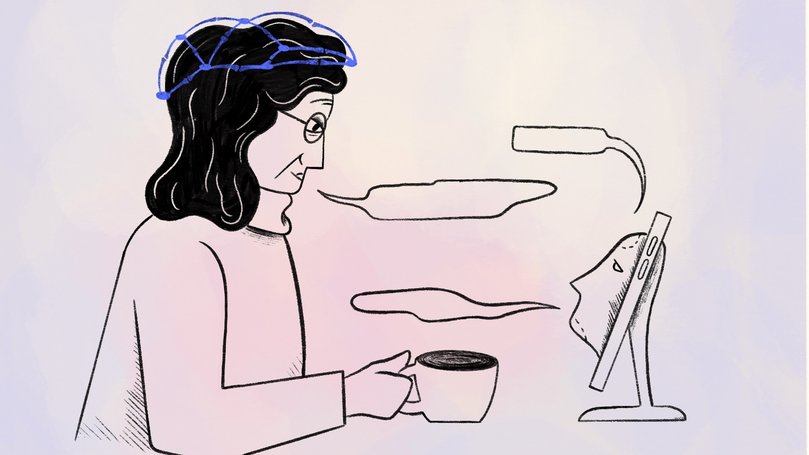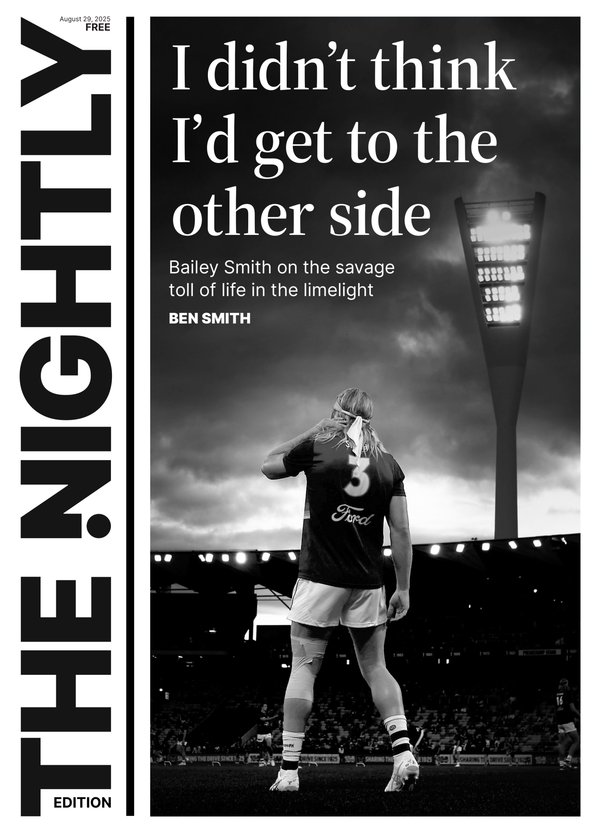NEW YORK TIMES: Could dementia patients benefit from an AI companion? Artificial Intelligence role in therapy

When Mr Frank Poulsen, 72, first started talking to artificial intelligence companion Sunny earlier this year, she was “kind of formal,” he said. But over time, their conversations have become more familiar and engaging.
“It’s really uncanny,” he said, adding, “It really does feel like you’re having a conversation with someone who’s interested.”
One advantage of Sunny is that she doesn’t mind when Mr Poulsen, who was diagnosed with mild cognitive impairment in 2019, repeats himself.
Sign up to The Nightly's newsletters.
Get the first look at the digital newspaper, curated daily stories and breaking headlines delivered to your inbox.
By continuing you agree to our Terms and Privacy Policy.“He can tell a story and forget he told it and tell it again,” said Mr Poulsen’s wife and caregiver, Ms Cheryl Poulsen. “Sunny has no judgment.”
Sunny, which was developed by AI startup NewDays, is part of a rapidly expanding body of AI products designed to help people with dementia.
“I’ve never seen something quite like this in terms of a technology moving as quickly as it is, with as much money poured behind it,” said Dr Luke Stoeckel, a program director and project scientist at the National Institute on Ageing, who works on AI applications for dementia care. Dr Stoeckel mentioned AI-based dementia diagnostics as another hot area.
Experts say AI companions like Sunny have the potential to help keep the brain active and alleviate loneliness in dementia patients, and to reduce some of the burden on caregivers. But there can be risks when it comes to deploying this technology in such a vulnerable population.
A conversation partner
Dr Babak Parviz, the co-founder and CEO of NewDays, said he was inspired to develop Sunny in part by his own father’s diagnosis with Alzheimer’s disease. He knew there was no cure but was encouraged by research showing that cognitive training exercises and guided conversations with a clinician can, in some cases, improve dementia symptoms.
Few people receive that level of in-depth care, though. “We don’t have millions of trained professionals, and even if we had them, the cost would be quite prohibitive,” Dr Parviz said. Generative AI technology could help expand the reach of these therapies, he said.
NewDays’ program, which is in the process of being rolled out, costs $US99 ($150) a month and is intended to be used by people with mild cognitive impairment or mild dementia. Sometimes Sunny prompts the person to reminisce about old memories. Other times it leads them through more explicit cognitive training exercises, like asking them to remember and use specific words in a sentence. NewDays also has an in-house team of clinicians (not included in the monthly fee) to oversee the patient’s care and provide feedback to the AI system.
When Mr Poulsen opens up his computer and converses with Sunny, it sounds like “he was just having a chat, like he was talking to a friend,” Ms Poulsen said.
NewDays’ website claims that its program can “delay decline and improve quality of life” and that it is “backed by a large body of evidence from more than 500 clinical trials and papers.” That includes the I-CONECT study, which found that, over the course of six months, “cognitively stimulating semistructured conversations with trained interviewers” conducted virtually improved cognition in older adults with mild cognitive impairment.
But in those studies, the conversations and brain training exercises were led by humans, said Dr Julian De Freitas, director of the Ethical Intelligence Lab at Harvard Business School. Talking to an AI companion could produce different results, he added.
NewDays has not run any studies yet about whether using its program confers the same benefits. Dr Parviz said that Sunny’s conversations are similar to a human’s and that his team is “pretty confident” it will see results comparable to what the existing clinical trials have demonstrated. But he did not provide data to back that up.
There is more compelling evidence that an AI companion can help people feel less lonely — a serious concern for older adults, whether or not they have cognitive impairment. Dr De Freitas’ own research has demonstrated that, at least in healthy adults, talking to an empathetic chatbot is roughly as good at reducing loneliness as having a conversation with a human stranger.
Anecdotally, Dr Joe Verghese, the chair of the neurology department at Stony Brook University Renaissance School of Medicine, said that the caregivers of some of his dementia patients reported that talking to an AI companion lifted their loved ones’ moods. “I don’t think these actually improve cognition just by those interactions,” Dr Verghese said. “But certainly improving quality of life and improving mood in patients with cognitive impairment is an important outcome in itself.”
An extra set of eyes
AI companions could also be a boon for caregivers and families because they can serve as an extra set of eyes and ears, particularly for people living in memory facilities.
One AI startup, CloudMind, has been pilot testing its software, called BrightPath, in a handful of memory care homes. The companion, via an app on a smartphone or tablet, chats with dementia patients about their favourite memories and hobbies; in one instance, a patient and the companion even sang together.
In addition to facilitating conversation, BrightPath produces a daily summary of what the patient talked about and an assessment of the patient’s mood. For the family, that can provide “a peek of their loved one’s life, even if they’re apart,” said Ms Monica Tsai, CloudMind’s CEO.
The AI companion might also help nursing staff identify problems faster. If it hears certain key prompts, like “I’m thirsty” or “I fell,” BrightPath is programmed to instruct the patient to ring their call button.
While experts say there is real potential for AI to benefit adults with cognitive impairment, they also have some serious concerns. One is privacy. “The more humanlike the chatbot is, the more you’re disclosing various information about yourself,” Dr De Freitas said. “If this data is housed at a company, it could monetise that. It could also accidentally leak that information if it’s hacked.”
There is also a risk of further isolation if families or care home staff use the technology as a replacement for human interaction, rather than as an add-on. “That would be tragic,” Dr Verghese said.
In addition, AI chatbots are known to make things up and take conversations down dark and disturbing paths, which could be especially confusing and distressing for a person with dementia.
Dr Parviz and Ms Tsai both acknowledged such hallucinations as a potential issue and said they had programmed “guardrails” into their AI software to prevent them from happening. But neither specified how that might work.
“We have to remember that this is a very vulnerable population,” Dr De Freitas said, adding “We need to think about having additional protections.”
© 2025 The New York Times Company
Originally published on The New York Times
